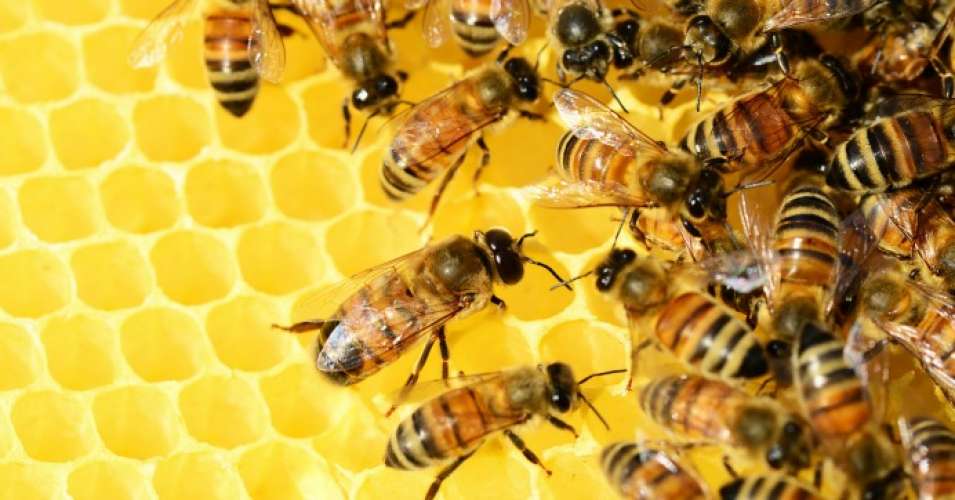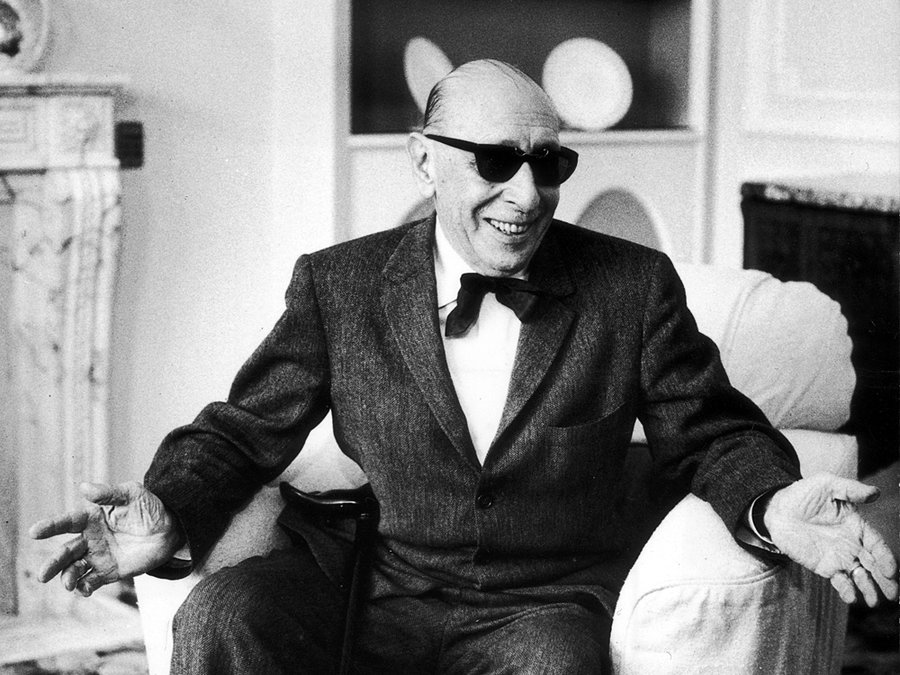Igor Stravinsky was an inveterate liar. He lied about big things, like the fact that he used authentic folk tunes to craft The Rite of Spring (not only did he use folk songs, all the songs he used were located on the bottom of right hand pages in the collection he was studying); and he also lied about little things, like what year he first heard Debussy’s “Prélude à l’après-midi d’un faune” (it was premiered in Russia in 1904 in Pavlovsk, but Stravinsky himself was in Pavlovka, about 1,000 miles away.)

In preparing for talks at the Chicago Symphony this past weekend, I came across a real set of whoppers from old Igor, all to do with his opus 3, the Scherzo fantastique.
Bees
The Scherzo fantastique is music about bees. More specifically, it is a musical portrayal of bees in the hive, their communications, their mating rituals, and their general swarm of activity. This is Stravinsky’s prefatory note from the French edition of the score:
In the summer of 1907, I read many books on the life of bees and I was very much moved by many details in the life of this extraordinary world. The uninterrupted life of the swarm (hive) through the generations and the nuptial flight of the queen bee, the murder of the male, her lover, in the giddy heights, the vital energy and the ferocious lyricism served me as the so-called literary basis for this symphonic poem, which I have entitled Scherzo fantastique.
Most of that is true, except that Stravinsky definitely did not read “many books” about the life of bees that summer, he read one book: Maurice Maeterlinck’s La vie des abeilles (The life of bees).

It’s worth noting how weird it is that Stravinsky decided to compose a tone poem bases on a non-fiction treatise about insects. Maurice Maeterlinck wrote a few scientific essays, but he was mainly known as the leading poet-playwright in fin-de-siècle Europe, and most composers were setting Maeterlinck’s theatrical and lyrical masterpieces to music (Pelléas et Mélisdande, for example, was set by Fauré, Debussy, Schoenberg, and Sibelius.)
But Stravinsky was a weirdo so he wrote this bee piece. He was 26 years old and still in his infancy as a composer (unlike, say, Mozart or Mendelssohn, who were mature masters at that age.) In fact, he was still a student of Rimsky-Korsakov when he wrote the Scherzo and so he may have been inspired by his teacher’s most famous work.
While he was at his country estate working on the Scherzo, he kept Rimsky-Korsakov up to date on his progress, writing on June 18, 1907
When we see each other I’ll show you the spots in Maeterlinck I took for the program, since it won’t all go into a letter.
And indeed, if we compare La vie des abeilles to Stravinsky’s Scherzo, it’s pretty obvious how the whole thing lines up, starting with the very first notes, the “war-song of the queen bee”, which Maeterlinck describes as “resembling somewhat the note of a distant trumpet of silver,” and which Stravinsky gives to a muted trumpet playing forte.
From here the specific musical allusions continue apace. This sort of musical image-making is a perfectly fine thing for a composer to engage in, and it’s probably fine that Stravinsky hadn’t neither sought nor received permission from Maeterlinck to set his treatise to music – after all, it was a purely instrumental piece inspired by a scientific essay.
Lies
The big lies started about ten years later in 1917, when the Paris Opera’s ballet company planned a production of a new ballet called “Les abeilles” (the bees) set to the music of the Scherzo fantastique, and advertised the ballet and the music as being based on Maeterlinck’s treatise.
That’s when the lawyers got involved. Maeterlinck sued Stravinsky and the Paris Opera, but Stravinsky played dumb, claiming that, not only had he not based his piece on La vie des abeilles, but that he had been totally unaware of the Paris Opera’s intentions. He stopped barely short of claiming not to know what a bee was or that such insects even existed.
Stravinsky’s claim crumbles like the proverbial house of cards under the slightest scrutiny. In December 1916, he had written to Gabriel Pierné that he was looking forward to the ballet’s première, and we know for a fact that he had approved of the plans of the ballet with Jacques Rouché, the director of the Paris Opera, and that he had even been scheduled to conduct the opening night performance (and would have had he not been sick.)
It seems like he was able to deceive Maeterlinck well enough to evade any serious ramifications, and nothing really came of the lawsuit. This would of course embolden Stravinsky as he went on to rewrite his own personal history in essays and interviews in the coming years.

Coda
Maurice Maeterlinck, it turned out, was hardly a boy scout himself. In 1926, he wrote his long awaited follow up to The life of bees called The life of the termites, which he plagiarized nearly word-for-word from the Afrikaner poet-scientist Eugène Marais. (A linguistic note: Maeterlinck was Belgian, and though he wrote in French, he spoke Dutch well enough to read Marais’ Afrikaans treatise.)
Basically, nobody connected to the Scherzo fantastique had so much as a single moral fiber in their body.
Odds and ends
- The style of the Scherzo, which Stravinsky claimed had been inspired by modern French music (i.e. the Debussy pieces that he had never heard), rigorously followed Rimsky-Korsakov’s principals of harmony. That is, until the central portion of the piece, in which Stravinsky stole unabashedly from Richard Wagner. Listen to the section beginning at 3:42 in the above video and compare it to Wagner’s Siegfried Idyll.
- Stravinsky was quite pleased later in life with this early work, saying that it was “quite a good opus 3”.
- The orchestration of the Scherzo is unique in the repertoire. It is scored for triple woodwinds, four horns, three trumpets (including alto in F), celesta, and three harps, but completely dispenses with low brass, and includes only a part for suspended cymbal in the percussion department.
- In another letter to Rimsky-Korsakov, Stravinsky said that, “the harmony in The Bees will be fierce, like a toothache, but all at once it should turn pleasant, like cocaine.”